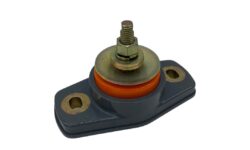Extend End Cap Pipe Fitting Life: Installation, Maintenance Tips”
End cap pipe fittings play an essential role in plumbing and piping systems. They seal pipe ends, prevent leaks, and keep out debris. Proper installation and maintenance are crucial for the effective functioning of end cap pipe fittings. Failure to do so can result in leaks, contamination, and other issues that can compromise the integrity of the entire system.
In this blog post, we will discuss some of the best practices for the installation and maintenance of end cap pipe fittings. These practices will help ensure their longevity and reliability.
1. Choose the Appropriate End Cap Fitting:
end cap pipe fitting come in different sizes, shapes, and materials. Therefore, it is essential to ensure you have the right fitting before installation. Choosing the right size of the fitting is crucial to ensure a perfect seal and compatibility with the pipes to which they will be installed. If the pipe material is different from the end cap material, make sure they are compatible to avoid corrosion. Different types of pipes require specific end cap fittings such as brass fittings for copper pipes, or plastic fittings for PEX pipes.
Choosing the appropriate end cap pipe fitting depends on several factors such as the pipe material, piping system application, and desired level of sealing. It is important to consider the size, pressure rating, and temperature requirements of the piping system before selecting an end cap fitting. Stainless steel end cap fittings are commonly used due to their durability and corrosion-resistant properties. Additionally, it is important to choose an end cap fitting that is compatible with the other components of the piping system. Consulting with a piping system expert can help ensure the appropriate end cap fitting is selected for optimal performance and safety.
2. Check and Clean the End Cap Before Installation:
It is essential to inspect the fitting for cracks, deformities or any visible damage before installation. If you find any damage, replace the end cap altogether. Cleaning the fitting with a cloth prior to installation will remove any debris, ensuring a tight seal once installed.
Before installation of an end cap, it is important to check and clean the fitting to ensure optimal performance and sealing. This involves inspecting the end cap for any damage or defects that could impact its ability to function properly. Additionally, removing any debris or contaminants from the fitting can help improve sealing and prevent potential leaks.
To clean the end cap, use a lint-free cloth and an appropriate cleaning agent such as isopropyl alcohol or acetone. Wipe down the surface to remove dirt, oil, and other particles that may interfere with the seal. Avoid using abrasive materials or cleaners that could scratch or damage the end cap surface.
Once the end cap has been checked and cleaned, it can be installed onto the pipe using appropriate tools and techniques for the specific piping system. Following manufacturer guidelines and industry best practices can help ensure a proper and secure installation.
3. Use Proper Installation Techniques:
Improper installation can lead to leaks, leading to costly repairs. Tightening the end cap pipe fitting too much can damage the threads, while not tightening enough may lead to a leak. Applying Teflon tape, pipe dope, or sealant to the threads can help prevent leaks. Make sure to use the manufacturer’s recommended tightening instructions, typically between 2 to 2 ½ turns after hand tightening.
4. Inspect the Fitting Regularly:
After installation, check the end cap regularly for any signs of wear and tear, leaks or corrosion. Regular inspection helps maintain the integrity of the system and ensures that any potential issues are identified early and addressed quickly. Periodic cleaning is also necessary to remove any build-up from the inside of the fitting.
5. Schedule Professional Maintenance:
While homeowners can largely do most maintenance themselves, it’s recommended to schedule professional maintenance at least once per year. Regular professional maintenance ensures that the end cap pipe fittings are functioning efficiently and correctly. Consider it an investment in the longevity of your piping system.
Conclusion:
End cap fittings are an integral part of plumbing and piping systems. Whether you have a new installation project or require maintenance of existing end caps, it’s essential to follow proper installation and maintenance techniques to ensure the longevity and reliability of your system. These tips will help to minimize wear and tear, prevent contamination, and keep your system in top working order. When in doubt or for any major repairs, it is always advisable to seek professional assistance to prevent any further damage to the fittings. Following these best practices will help you to ensure a long-lasting plumbing system without unnecessary costs.



